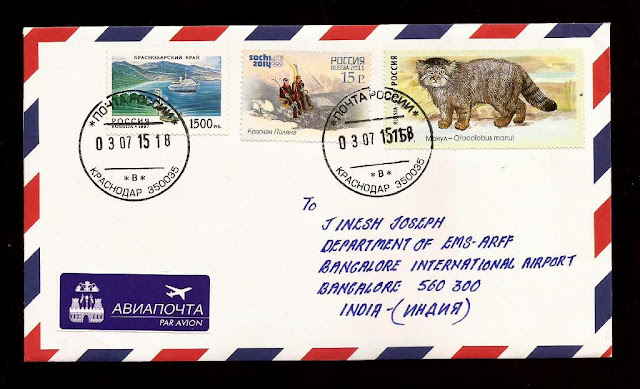Krasnodar Krai (Russian: Краснода́рский край, tr. Krasnodarsky kray,) is a
federal subject of Russia (a krai), located in the North Caucasus region in Southern Russia and administratively a part of the Southern Federal District.
Its administrative center is
the city
of Krasnodar. The third most-populous federal subject, the krai
had a population of 5,226,647 as of the 2010 Census. Krasnodar
Krai is formally and informally referred to as Kuban (Russian: Кубань), a
term denoting former Kuban People's Republic
and historic region of Kuban situated between the Sea of Azov and the Kuban River which is mostly composed of the krai's territory.
It is bordered by Rostov Oblast to the north, Stavropol Krai to the east, Karachay-Cherkessia to the
south-east, and Adygea is an enclave entirely within the krai.
Krasnodar Krai shares an international border with Georgia to the south, and borders the disputed
territory of Crimea to the west, across the Kerch Strait.
The northern part of the
krai belongs to the Don Steppe, while southern region's Mediterranean climate has
made it a popular tourist location. Novorossiysk is Russia's main port on the Black Sea, one of
the few cities awarded the title of the Hero City, and Sochi was host of the XXII Olympic Winter Games
in 2014. Krasnodar Krai is home to significant infrastructure of the Russian Navy's Black Sea Fleet.
Krasnodar Krai is located
in the southwestern part of the North Caucasus and borders with Rostov Oblast in the northeast, Stavropol Krai and Karachay-Cherkessia in the
east, and with the Abkhazia region (internationally
recognized as part of Georgia) in the south. The
Republic of Adygea is
completely encircled by the krai territory. The krai's Taman Peninsula is situated between the Sea of Azov in the north and the Black Sea in the south. In the west, the Kerch Strait separates the krai from the contested Crimean Peninsula, internationally recognised as part of Ukraine but under de facto Russian control. At its widest
extent, the krai stretches for 327 kilometers (203 mi) from north to south
and for 360 kilometers from east to west.
The krai is split into two
distinct parts by the Kuban River, which gave its name to this
entire geographic region. The southern, seaward part is the western extremity
of the Caucasus range, lying within the Crimean
Submediterranean forest complex ecoregion; the climate is Mediterranean or, in the
southeast, subtropical. Historically it is known as Circassia. The northern part is a steppe zone which shares continental climate
patterns. It is also known as Kuban region. The height of the mountains
exceeds 3,000 meters (9,800 ft), with Mount Tsakhvoa being the highest at 3,346 meters
(10,978 ft). Mount Fisht, at 2,867 meters
(9,406 ft), is the Great Caucasus' westernmost peak with a glacier.
The Black Sea coast
stretches from the Kerch Strait to Adler and is shielded by
Caucasus Mountains from the cold northern winds. Numerous small mountain rivers
flow in the coastal areas, often creating picturesque waterfalls. Lake Abrau, located in the wine-making region of Abrau-Dyurso, is the largest lake in the northeastern Caucasus
region. Lake Ritsa is considered to be one of the most picturesque
lakes in the region and "the diamond of Caucasus"; it is located in
an intermountain basin at the height of 884 meters (2,900 ft) above sea level.


No comments:
Post a Comment
Note: only a member of this blog may post a comment.